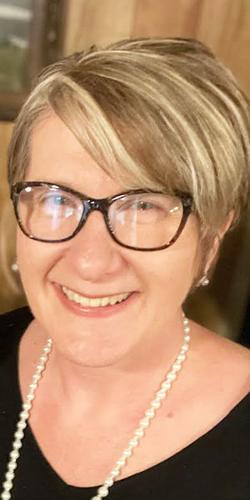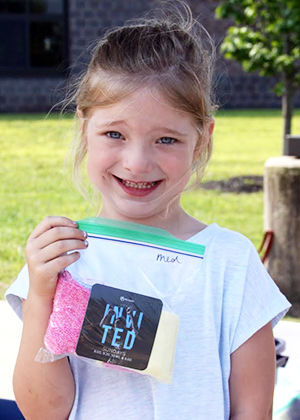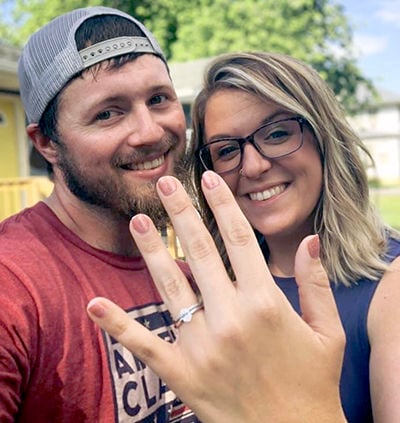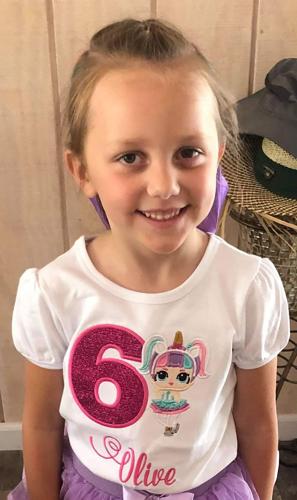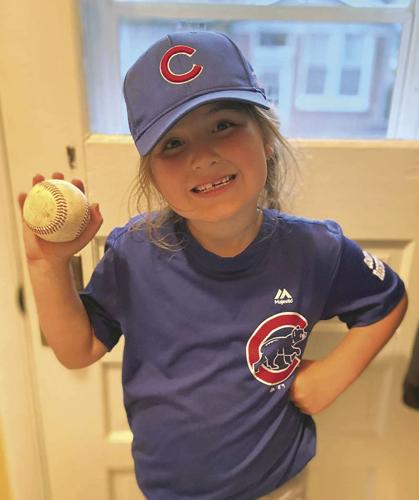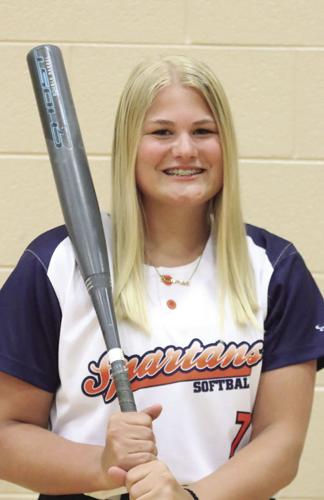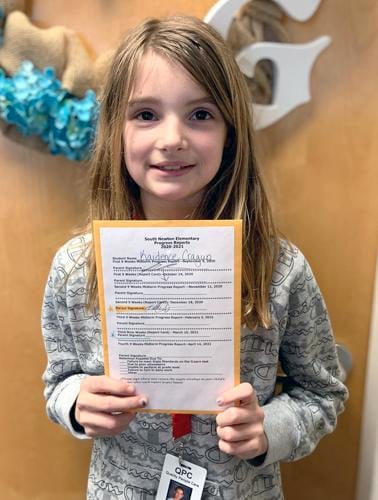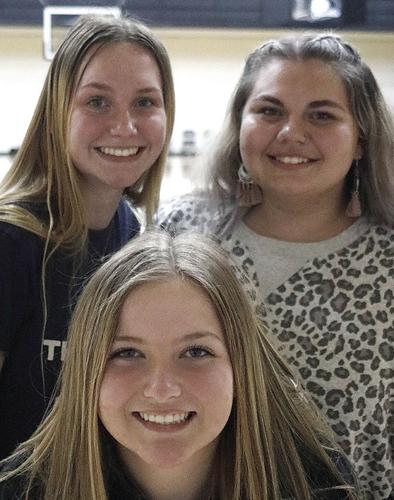Newton County Clerk, Jessica Firkins would like to remind voters of Goodland that Petitions of Nomination for Goodland Town Council may be filed in the Clerk’s Office now through July 1, 2024 at 12:00 Noon.
Goodland, IN – April 23, 2024 – First Financial Bank (Nasdaq: FFBC) is launching a book drive at its location in Goodland, with the goal of contributing to improved financial literacy in the community. Books about personal finance and other subjects can be dropped in a specially marked bin i…
On April 27 the Drug Enforcement Administration (DEA) is sponsoring the 26th nationwide “Prescription Drug Take Back” initiative. The “Take Back” initiative seeks to prevent prescription drug abuse and theft through proper disposal of prescription drugs, according to information provided.
(Family Features) Despite the attention drawn to the topic of concussions over the past decade, it can be difficult to find readily available answers about what parents and young athletes should do after sustaining a concussion.
Weekly Smiles
Kentland, IN
Right Now
- Humidity: 83%
- Feels Like: 65°
- Heat Index: 65°
- Wind: 5 mph
- Wind Chill: 65°
- UV Index: 0 Low
- Sunrise: 05:46:08 AM
- Sunset: 07:47:38 PM
- Dew Point: 60°
- Visibility: 10 mi
Today
Rain. Low 61F. Winds light and variable. Chance of rain 90%.
Tonight
Rain. Low 61F. Winds light and variable. Chance of rain 90%.
Tomorrow
Cloudy skies early, followed by partial clearing. High 68F. Winds N at 10 to 15 mph.
Chance of Rain: 89%
Sunrise: 05:46:08 AM
Sunset: 07:47:38 PM
Humidity: 92%
Wind: W @ 6 mph
UV Index: 0 Low
Thursday Night
Rain. Low 61F. Winds light and variable. Chance of rain 90%.
Chance of Rain: 24%
Sunrise: 05:44:53 AM
Sunset: 07:48:41 PM
Humidity: 76%
Wind: N @ 12 mph
UV Index: 5 Moderate
Friday Night
A few clouds from time to time. Low 51F. Winds NE at 5 to 10 mph.
Chance of Rain: 10%
Sunrise: 05:43:40 AM
Sunset: 07:49:44 PM
Humidity: 67%
Wind: SSE @ 6 mph
UV Index: 8 Very High
Saturday Night
Rain showers in the evening becoming more intermittent overnight. Low around 55F. Winds WSW at 5 to 10 mph. Chance of rain 60%.
Chance of Rain: 15%
Sunrise: 05:42:27 AM
Sunset: 07:50:46 PM
Humidity: 62%
Wind: N @ 11 mph
UV Index: 8 Very High
Sunday Night
Mainly cloudy. Low near 50F. Winds NE at 5 to 10 mph.
Chance of Rain: 40%
Sunrise: 05:41:16 AM
Sunset: 07:51:48 PM
Humidity: 65%
Wind: ESE @ 10 mph
UV Index: 7 High
Monday Night
Partly cloudy skies early will give way to occasional showers later during the night. Low 61F. Winds SE at 5 to 10 mph. Chance of rain 60%.
Chance of Rain: 58%
Sunrise: 05:40:07 AM
Sunset: 07:52:50 PM
Humidity: 75%
Wind: SSW @ 18 mph
UV Index: 7 High
Tuesday Night
Partly to mostly cloudy skies with scattered thunderstorms before midnight. Low 61F. Winds SW at 10 to 15 mph. Chance of rain 60%.
Chance of Rain: 58%
Sunrise: 05:38:59 AM
Sunset: 07:53:52 PM
Humidity: 68%
Wind: SSW @ 14 mph
UV Index: 7 High
Wednesday Night
Scattered thunderstorms during the evening followed by a few showers overnight. Low 58F. Winds W at 10 to 15 mph. Chance of rain 60%.
Recent Obituaries
Follow us on Facebook
Special Sections Spotlight
South Newton Softball struggles against Rensselaer Central: The South Newton Rebels’ girls’ softball team faced off against Rensselaer Central on April 22nd and 25th, enduring two consecutive …
The North Newton Spartans girls’ softball team are now 2-0 in the conference after dominating the North White Vikings with a 12-0 shutout victory at home on April 30th.
North Newton winning streak ends at hands of Delphi Community: On April 22, the North Newton Spartans’ baseball team faced a setback, ending their seven-game winning streak with a 13-9 loss ag…
With two teams peppered with youth up and down their lineup, clutch plays needed to be made by both to leave with a Midwest Conference win.
Trending Food Videos
In this article, Dr. Puja Uppal, Family Medicine, shares her expert insights of the findings and provides Indiana residents with evidence-based recommendations for protecting their health.Why This Matters to YouThe USPSTF has strongly recommended that all women begin breast cancer screenings at age 40. Screenings should continue every other year through age 74.What This Means for Your Health"This proactive shift in public health strategy is aimed at reducing breast cancer death rates among women." Dr. Puja Uppal, Family MedicineDoctor's Expert Insights About The New Mammogram USPSTF Guidelines and Women's Health in Monroe County, IndianaKnow this: "The new guidelines now say that all women should get a mammogram every two years, starting at age 40. This change was made mainly because more women in their 40s are getting breast cancer than before. Also, Black women have a higher chance of dying from breast cancer, when compared to other women. Starting screenings at a younger age could help find breast cancer earlier and improve the chances of survival.Doctors should talk to their patients about these new guidelines. They should make sure their patients understand why it's important to get screened on time. Also, if you have dense breasts, we now have more available options to improve screeningMany people may not know that having dense breasts can make it harder to see breast cancer on a mammogram." Dr. Puja Uppal, Family Medicine.Actionable Steps: What You Can Do NextFurther steps: Talk to your doctor to find out if you're at high risk for breast cancer. And, if so, you may be eligible for a 3-D mammogram. Early detection is key! Health News Today: The USPSTF advises that all women start getting breast cancer screenings every other year--starting at age 40.The new guidelines suggest that getting a mammogram every two years has more benefits and fewer downsides compared to getting one every year.The Science Made Simple: Key Findings and What They Mean for Monroe County ResidentsBreast cancer mortality: Biennial screening mammography in women aged 40 to 74 years has a moderate benefit in reducing breast cancer mortality.Disparities in breast cancer outcomes: Black women are more likely to be diagnosed with breast cancer beyond stage I. Also, Black women are more likely to be diagnosed with triple-negative cancers and are approximately 40% more likely to die of breast cancer compared with White women.Digital breast tomosynthesis (DBT): Current evidence suggests that both digital mammography and DBT are effective primary screening modalities. Modeling estimates that the benefits of DBT are similar to digital mammography.Supplemental screening: There is insufficient evidence to determine the balance of benefits and harms of supplemental screening for breast cancer using breast ultrasonography or MRI in women identified to have dense breasts on an otherwise negative screening mammogram.Screening in older women: There is insufficient evidence to determine the balance of benefits and harms of screening mammography in women 75 years or older.Conclusion: The USPSTF recommends biennial screening mammography for women aged 40 to 74 years. More research is needed to address evidence gaps regarding screening in older women, supplemental screening in women with dense breasts, and disparities in breast cancer outcomes, especially in Black women.Medical News Today: What This Means for Your Health in Monroe County, IndianaThe Bottom Line: Early detection is key, and every woman should discuss their screening schedule with their healthcare provider to ensure timely and appropriate care."This change was driven by two major factors. First, more women in their 40s are getting breast cancer, with rates increasing about 2% each year—which means there is more potential benefit to screening. Second, our modeling was able to use new data on screening in the United States and to look at outcomes specific to Black women for the first time. It is now clear that screening every other year starting at age 40 years has the potential to save about 20% more lives from breast cancer among all women, and there is even greater potential benefit for Black women, who are about 40% more likely to die of breast cancer." USPSTF. (Study Interview)What They're Saying: "These recommendations apply to cisgender women and all other persons assigned female at birth (including transgender men and nonbinary persons) 40 years or older at average risk of breast cancer. This is because the net benefit estimates are driven by sex (ie, female) rather than gender identity, although the studies reviewed for this recommendation generally used the term “women.” These recommendations apply to persons who have factors associated with an increased risk of breast cancer, such as a family history of breast cancer (ie, a first-degree relative with breast cancer) or having dense breasts. They do not apply to persons who have a genetic marker or syndrome associated with a high risk of breast cancer (eg, BRCA1 or BRCA2 genetic variation), a history of high-dose radiation therapy to the chest at a young age, or previous breast cancer or a high-risk breast lesion on previous biopsies. Of note, the USPSTF has a separate recommendation on risk assessment, genetic counseling, and genetic testing for BRCA-related cancer,8 and family history is a common feature of risk assessment tools that help determine likelihood of BRCA1 or BRCA2 genetic variation." (Study Source)Read More Rising Breast Cancer Rates in Young Women Under 50. Doctor ExplainsHealth Standard Newswire: The USPSTF advises that all women start getting breast cancer screenings every other year-- starting at age 40.Health Facts That Matter: Key Statistics for Monroe County, IndianaThe following health facts impact your physical health directly!Did you know there were 13983 deaths from cancer in Indiana in 2021?18.7% of you in Monroe County are smokers.65.9% of you in Monroe County have had a mammogram in the past year.33% of you in Monroe County are binge drinkers.All of these variables above play an important role in the outcomes of your overall health.The Health Standard Newswire.
In this article, Dr. Puja Uppal, Family Medicine, shares her expert insights of the findings and provides Indiana residents with evidence-based recommendations for protecting their health.Why This Matters to YouThe USPSTF has strongly recommended that all women begin breast cancer screenings at age 40. Screenings should continue every other year through age 74.What This Means for Your Health"This proactive shift in public health strategy is aimed at reducing breast cancer death rates among women." Dr. Puja Uppal, Family MedicineDoctor's Expert Insights About The New Mammogram USPSTF Guidelines and Women's Health in Vanderburgh County, IndianaKnow this: "The new guidelines now say that all women should get a mammogram every two years, starting at age 40. This change was made mainly because more women in their 40s are getting breast cancer than before. Also, Black women have a higher chance of dying from breast cancer, when compared to other women. Starting screenings at a younger age could help find breast cancer earlier and improve the chances of survival.Doctors should talk to their patients about these new guidelines. They should make sure their patients understand why it's important to get screened on time. Also, if you have dense breasts, we now have more available options to improve screeningMany people may not know that having dense breasts can make it harder to see breast cancer on a mammogram." Dr. Puja Uppal, Family Medicine.Actionable Steps: What You Can Do NextFurther steps: Talk to your doctor to find out if you're at high risk for breast cancer. And, if so, you may be eligible for a 3-D mammogram. Early detection is key! Health News Today: The USPSTF advises that all women start getting breast cancer screenings every other year--starting at age 40.The new guidelines suggest that getting a mammogram every two years has more benefits and fewer downsides compared to getting one every year.The Science Made Simple: Key Findings and What They Mean for Vanderburgh County ResidentsBreast cancer mortality: Biennial screening mammography in women aged 40 to 74 years has a moderate benefit in reducing breast cancer mortality.Disparities in breast cancer outcomes: Black women are more likely to be diagnosed with breast cancer beyond stage I. Also, Black women are more likely to be diagnosed with triple-negative cancers and are approximately 40% more likely to die of breast cancer compared with White women.Digital breast tomosynthesis (DBT): Current evidence suggests that both digital mammography and DBT are effective primary screening modalities. Modeling estimates that the benefits of DBT are similar to digital mammography.Supplemental screening: There is insufficient evidence to determine the balance of benefits and harms of supplemental screening for breast cancer using breast ultrasonography or MRI in women identified to have dense breasts on an otherwise negative screening mammogram.Screening in older women: There is insufficient evidence to determine the balance of benefits and harms of screening mammography in women 75 years or older.Conclusion: The USPSTF recommends biennial screening mammography for women aged 40 to 74 years. More research is needed to address evidence gaps regarding screening in older women, supplemental screening in women with dense breasts, and disparities in breast cancer outcomes, especially in Black women.Medical News Today: What This Means for Your Health in Vanderburgh County, IndianaThe Bottom Line: Early detection is key, and every woman should discuss their screening schedule with their healthcare provider to ensure timely and appropriate care."This change was driven by two major factors. First, more women in their 40s are getting breast cancer, with rates increasing about 2% each year—which means there is more potential benefit to screening. Second, our modeling was able to use new data on screening in the United States and to look at outcomes specific to Black women for the first time. It is now clear that screening every other year starting at age 40 years has the potential to save about 20% more lives from breast cancer among all women, and there is even greater potential benefit for Black women, who are about 40% more likely to die of breast cancer." USPSTF. (Study Interview)What They're Saying: "These recommendations apply to cisgender women and all other persons assigned female at birth (including transgender men and nonbinary persons) 40 years or older at average risk of breast cancer. This is because the net benefit estimates are driven by sex (ie, female) rather than gender identity, although the studies reviewed for this recommendation generally used the term “women.” These recommendations apply to persons who have factors associated with an increased risk of breast cancer, such as a family history of breast cancer (ie, a first-degree relative with breast cancer) or having dense breasts. They do not apply to persons who have a genetic marker or syndrome associated with a high risk of breast cancer (eg, BRCA1 or BRCA2 genetic variation), a history of high-dose radiation therapy to the chest at a young age, or previous breast cancer or a high-risk breast lesion on previous biopsies. Of note, the USPSTF has a separate recommendation on risk assessment, genetic counseling, and genetic testing for BRCA-related cancer,8 and family history is a common feature of risk assessment tools that help determine likelihood of BRCA1 or BRCA2 genetic variation." (Study Source)Read More Rising Breast Cancer Rates in Young Women Under 50. Doctor ExplainsHealth Standard Newswire: The USPSTF advises that all women start getting breast cancer screenings every other year-- starting at age 40.Health Facts That Matter: Key Statistics for Vanderburgh County, IndianaThe following health facts impact your physical health directly!Did you know there were 13983 deaths from cancer in Indiana in 2021?21.2% of you in Vanderburgh County are smokers.69.3% of you in Vanderburgh County have had a mammogram in the past year.36.6% of you in Vanderburgh County are binge drinkers.All of these variables above play an important role in the outcomes of your overall health.The Health Standard Newswire.
In this article, Dr. Puja Uppal, Family Medicine, shares her expert insights of the findings and provides Indiana residents with evidence-based recommendations for protecting their health.Why This Matters to YouThe USPSTF has strongly recommended that all women begin breast cancer screenings at age 40. Screenings should continue every other year through age 74.What This Means for Your Health"This proactive shift in public health strategy is aimed at reducing breast cancer death rates among women." Dr. Puja Uppal, Family MedicineDoctor's Expert Insights About The New Mammogram USPSTF Guidelines and Women's Health in Howard County, IndianaKnow this: "The new guidelines now say that all women should get a mammogram every two years, starting at age 40. This change was made mainly because more women in their 40s are getting breast cancer than before. Also, Black women have a higher chance of dying from breast cancer, when compared to other women. Starting screenings at a younger age could help find breast cancer earlier and improve the chances of survival.Doctors should talk to their patients about these new guidelines. They should make sure their patients understand why it's important to get screened on time. Also, if you have dense breasts, we now have more available options to improve screeningMany people may not know that having dense breasts can make it harder to see breast cancer on a mammogram." Dr. Puja Uppal, Family Medicine.Actionable Steps: What You Can Do NextFurther steps: Talk to your doctor to find out if you're at high risk for breast cancer. And, if so, you may be eligible for a 3-D mammogram. Early detection is key! Health News Today: The USPSTF advises that all women start getting breast cancer screenings every other year--starting at age 40.The new guidelines suggest that getting a mammogram every two years has more benefits and fewer downsides compared to getting one every year.The Science Made Simple: Key Findings and What They Mean for Howard County ResidentsBreast cancer mortality: Biennial screening mammography in women aged 40 to 74 years has a moderate benefit in reducing breast cancer mortality.Disparities in breast cancer outcomes: Black women are more likely to be diagnosed with breast cancer beyond stage I. Also, Black women are more likely to be diagnosed with triple-negative cancers and are approximately 40% more likely to die of breast cancer compared with White women.Digital breast tomosynthesis (DBT): Current evidence suggests that both digital mammography and DBT are effective primary screening modalities. Modeling estimates that the benefits of DBT are similar to digital mammography.Supplemental screening: There is insufficient evidence to determine the balance of benefits and harms of supplemental screening for breast cancer using breast ultrasonography or MRI in women identified to have dense breasts on an otherwise negative screening mammogram.Screening in older women: There is insufficient evidence to determine the balance of benefits and harms of screening mammography in women 75 years or older.Conclusion: The USPSTF recommends biennial screening mammography for women aged 40 to 74 years. More research is needed to address evidence gaps regarding screening in older women, supplemental screening in women with dense breasts, and disparities in breast cancer outcomes, especially in Black women.Medical News Today: What This Means for Your Health in Howard County, IndianaThe Bottom Line: Early detection is key, and every woman should discuss their screening schedule with their healthcare provider to ensure timely and appropriate care."This change was driven by two major factors. First, more women in their 40s are getting breast cancer, with rates increasing about 2% each year—which means there is more potential benefit to screening. Second, our modeling was able to use new data on screening in the United States and to look at outcomes specific to Black women for the first time. It is now clear that screening every other year starting at age 40 years has the potential to save about 20% more lives from breast cancer among all women, and there is even greater potential benefit for Black women, who are about 40% more likely to die of breast cancer." USPSTF. (Study Interview)What They're Saying: "These recommendations apply to cisgender women and all other persons assigned female at birth (including transgender men and nonbinary persons) 40 years or older at average risk of breast cancer. This is because the net benefit estimates are driven by sex (ie, female) rather than gender identity, although the studies reviewed for this recommendation generally used the term “women.” These recommendations apply to persons who have factors associated with an increased risk of breast cancer, such as a family history of breast cancer (ie, a first-degree relative with breast cancer) or having dense breasts. They do not apply to persons who have a genetic marker or syndrome associated with a high risk of breast cancer (eg, BRCA1 or BRCA2 genetic variation), a history of high-dose radiation therapy to the chest at a young age, or previous breast cancer or a high-risk breast lesion on previous biopsies. Of note, the USPSTF has a separate recommendation on risk assessment, genetic counseling, and genetic testing for BRCA-related cancer,8 and family history is a common feature of risk assessment tools that help determine likelihood of BRCA1 or BRCA2 genetic variation." (Study Source)Read More Rising Breast Cancer Rates in Young Women Under 50. Doctor ExplainsHealth Standard Newswire: The USPSTF advises that all women start getting breast cancer screenings every other year-- starting at age 40.Health Facts That Matter: Key Statistics for Howard County, IndianaThe following health facts impact your physical health directly!Did you know there were 13983 deaths from cancer in Indiana in 2021?21.8% of you in Howard County are smokers.69.4% of you in Howard County have had a mammogram in the past year.41.2% of you in Howard County are binge drinkers.All of these variables above play an important role in the outcomes of your overall health.The Health Standard Newswire.
















